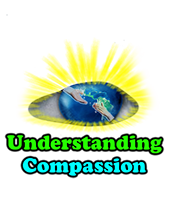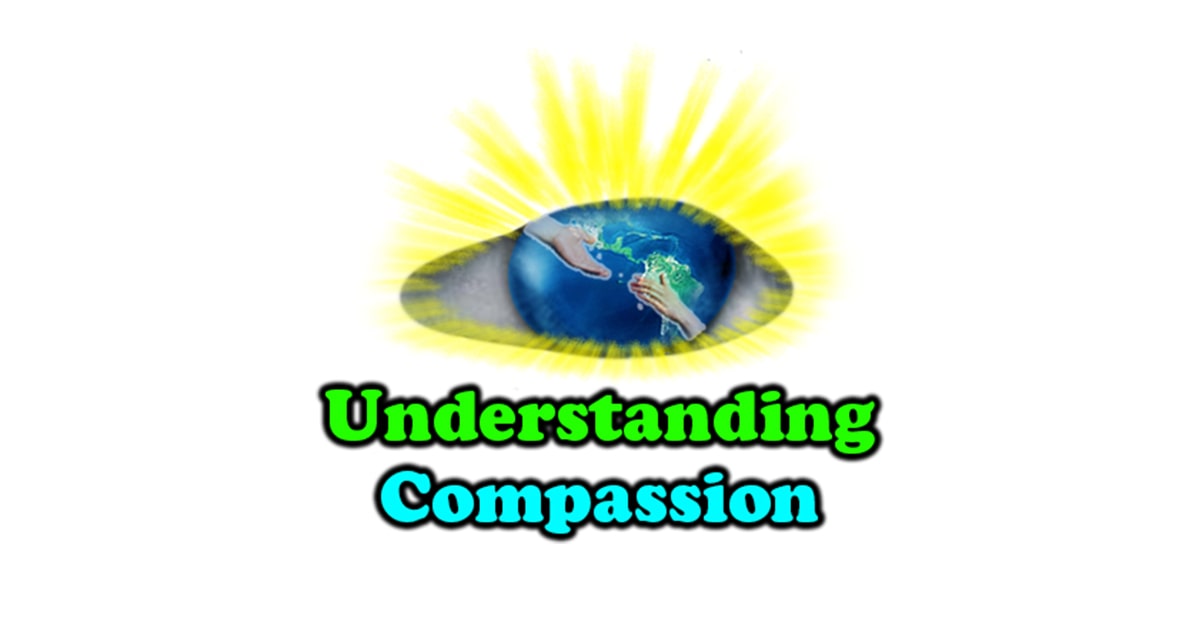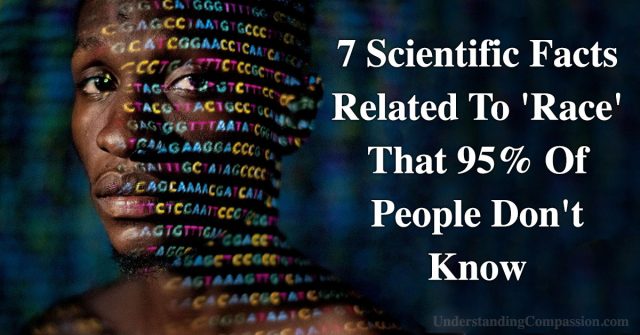‘Race’ is a very popular topic today, and it is one that everyone seems to have a different opinion on. Some say it is a very significant issue in the present, some say they’ve suffered as it’s been used against them, and some say it’s not even a real concept.
As we work towards promoting a kind, compassionate and loving world for everyone, it’s important that we understand the facts related to the ideas that divide us; especially the idea of human ‘races’. The idea of ‘Race’ was the basis for slavery in the U.S., it was the cause of the civil war; America’s biggest war, and it was the foundation of Nazi Germany during World War 2, in which the United States and the world united to protect innocent human beings from being exterminated based on an idea of ‘race’. It is arguably the single most dangerous idea invented by humans in the past 400 years, and it’s worth knowing the facts on, in order to promote a safe and compassionate world for all human beings. See if you know all of the 7 scientific facts below that 95% of people haven’t yet learned!
Here Are 7 Scientific Facts Related To ‘Race’ That 95% Of People Don’t Know:
1. All Human Beings On Earth Share 2+ Common Ancestors
Through researching mitochondrial DNA only inherited from the mother, geneticists have proven that all modern humans today are descendants of a single woman who lived around 200,000 years ago, nicknamed the “mitochondrial Eve”.[1]
Another study in 2013 found that all human males share a single ancestor in Africa roughly 125,000 to 156,000 years ago, and again confirmed that all human females trace back to the mitochondrial Eve, who their study showed lived in Africa as recently as 99,000 to 148,000 years ago.[2]
2. There Is No Such Thing As Separate Human ‘Races’: Race Is Not A Real Biological Grouping According To Science
The Human Genome Project[3], which was completed in 2003, had the goal of identifying and mapping out all of the genes of the human genome. The worldwide work from many countries, as well as several top genome sequencers; one being then president of Celera Genomics Craig Venter, helped to complete this massive project of understanding human DNA.
The renowned geneticist Venter emphasized that their work confirmed the fact that human genetic diversity cannot be captured by the concept of ‘race.’ Their research proved that all humans have genome sequences that are between 99.5% and 99.9% the same.
“The concept of race has no genetic or scientific basis,” Venter told the White House during a celebratory dinner after the completion of the initial genome draft. “Those who wish to draw precise ‘racial’ boundaries around certain groups will not be able to use science as a legitimate justification.”[4]
Race is not a real biological grouping according to science. The idea of race itself was created several hundreds years ago, before the days of computers, cars, phones, and the radio… before the days of modern biology, before the discovery of DNA, even before the first discovery of cells. The idea of race was invented during a time when the majority of the world’s population believed that the world was flat, and it has since been proven to be a false concept.
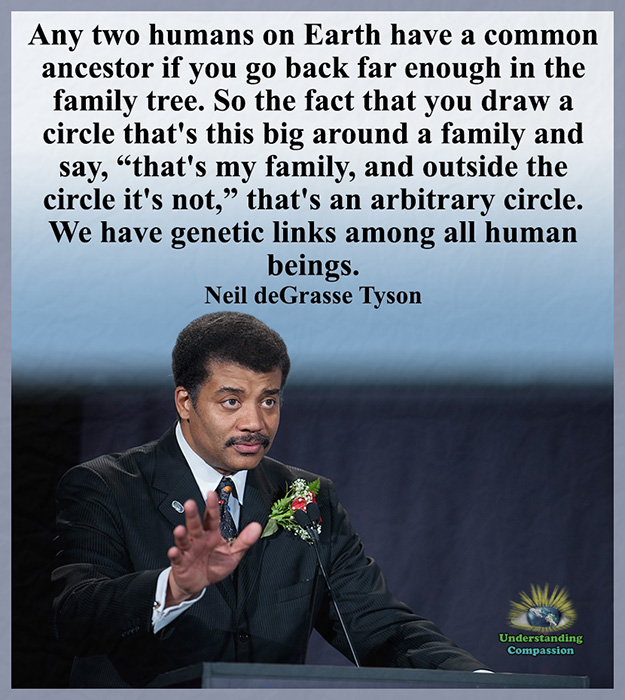
3. Skin Color Represents How Much Sunlight There Is In A Geographical Location And Can Change Within 50 Generations Of A Family: White To Black and Black To White
Skin color evolved through natural selection primarily to regulate the amount of UV radiation that penetrates the skin. In fact, ultraviolet radiation is responsible for more than 87% of the variation in human skin color.[5] These two world maps show the color variation in human skin colors around the world and the map of annual ultraviolet radiation from the Sun at the Earth’s surface. As you can see, humans with darker shades of skin color exist where UV radiation from the Sun is the strongest, and humans with light shades of skin color exist where UV radiation from the Sun is weakest.
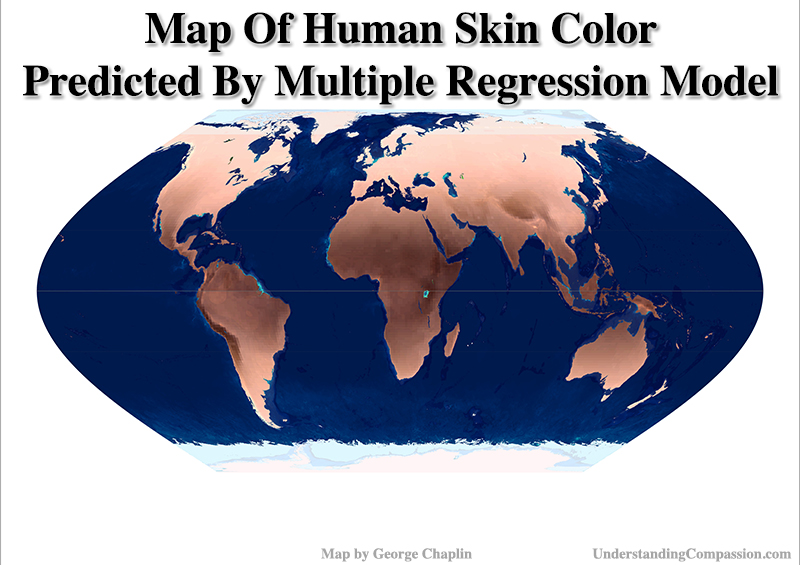
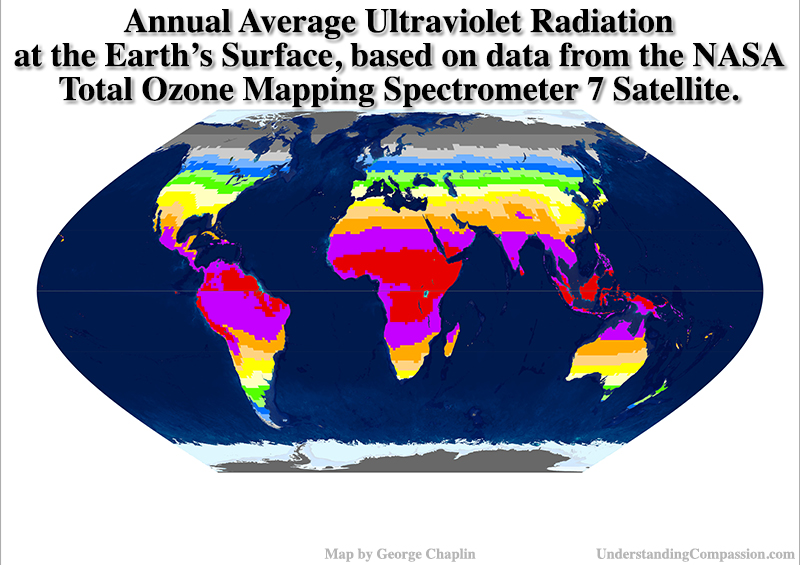
Researchers have found that most skin color changes occurred very recently; within the last 8,000 to 50,000 years[6][7] If a population of humans stays put for as little as 1,000 (50 generations) to 8,000 years, skin color begins making changes and adjusting to the optimal pigmentation to protect the body from the sun and from UV radiation; both from dark skin to light skin, and light skin to dark skin.
8,000 years is the blink of an eye in terms of evolution, a very, very short time, and while some very small outwardly visible changes, such as skin color, have taken place, it has not been nearly enough time to develop any considerable differences between any two humans on our planet, regardless of ancestry. Any two humans on Earth will genetically trace back to the same African population that existed roughly 60,000 years ago.
4. All Human Beings Came From The Same Original Human Population That Migrated Out Of Africa Around 60,000 Years Ago
60,000 years ago, one branch of humans, over time, left Africa and spread across the globe[8], replacing the earlier human populations of Homo erectus, and also the Neanderthals, who went extinct 40,000 years ago. All humans today are descendants of this group of humans that came from Africa some 60,000 years ago.[8]
Throughout this evolutionarily short period of time, humans have traveled and interbred across all populations, and as humans moved from place to place, meeting and copulating with their neighbors, genes too moved from place to place and reached every corner of the world.
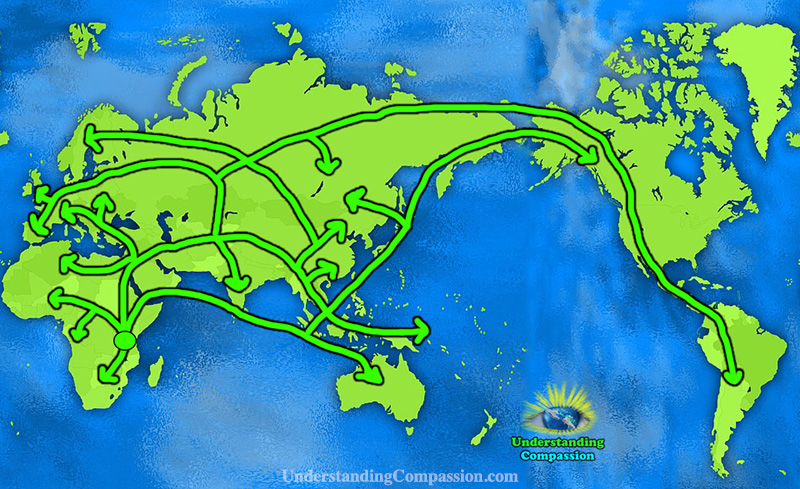
5. We Are Often Most Genetically Similar To People With Skin Colors Different From Our Own
Science has shown that in terms of genetics, 85-95%, or the vast majority of individual genetic variation(differences) happens between members of the same population.[9] An example of this is shown in the California Newsreel and PBS documentary Race – The Power of an Illusion, where African American, White Caucasian, and Latino classmates compare their skin colors, blood types and DNA. While their DNA is being processed, students are asked who they think they are most genetically similar to, and who they think they are least genetically similar to.
Most students believed that they would be most similar to other classmates with the same skin color as them: a white student thought he would be most similar to another white student, and least similar to another black student. Similarly, a black student also believed that his genetics would most closely match with those of another black student, and least match with those of another white student. The results surprise the students, as they find that their closest genetic matches are with people who have a different skin color, and they have the most genetic variation with those who have a similar skin color.[10]
6. Humans From All Areas On Earth Have The Same Mental Ability, Physical Ability and Musical Aptitude, Regardless Of Their Ancestry Or Skin Color
Studies have shown that humans from all areas of the globe, and with all skin colors and supposed ‘races’, are able to achieve high test scores when given an education, are able to excel in sports, and are able to create great music.[11] Studies have also shown that IQ scores depend solely on access to resources and higher education, as African-Bermudan students in Bermuda have begun to outperform American students in IQ tests after given access to equal education and equal resources.[11]
7. The False Idea Of Different Human ‘Races’ Was Spread To Maintain The Institution Of ‘Race’ Based Slavery
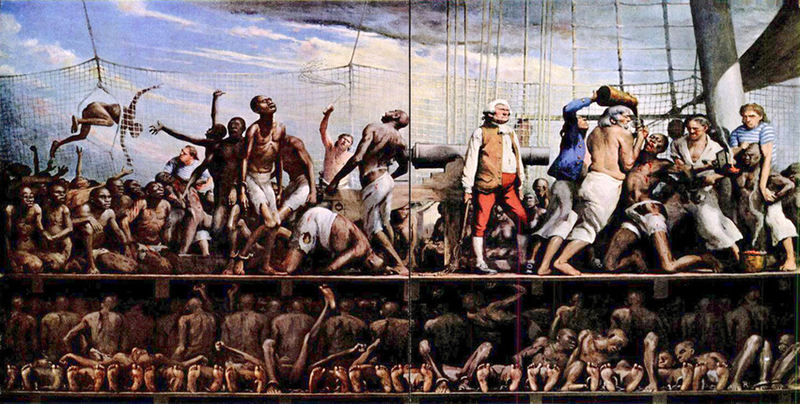
In 873AD Pope John VIII commanded under penalty of sin that all Christians who held other Christians as slaves must set them free[12][13]. It was not uncommon up to this point for prisoners of war, indigenous peoples of conquered lands, and non-Christians to be held as slaves. Yet the Christian religion had a deep belief at the time that anyone who became Catholic by converting to Christianity should truly be “saved” and set free.
Centuries later in North America, it was common for slaves to convert to Christianity, yet the willingness of wealthy slave owners to set their slaves free was near non-existent. They resisted the idea of slaves converting to Christianity, and resisted any ideas of slaves being spiritually equal to themselves. Wealthy slave owners feared that freeing slaves who became Catholics would lead to the growth of an abolitionist movement. There were many of the time who argued that there existed no discrepancy between the enslavement of Africans and their Christian beliefs, yet over time, more and more citizens along with slaves believed that the institution of slavery directly conflicted with the Christian religious principles of love, compassion and freedom[14][15].
Wealthy slave owners in America had a decision to make in regards to Christianity and their exploitation of slaves; either they follow the church’s law and set their slaves who chose to become Christians free, or they switch their justification for enslavement away from religion (which could be changed) and captured prisoners of war (who could convert and be saved), to something that could not be changed: to the black color of one’s skin. People who could prove that they were not captured in war and that they accepted the Catholic faith were still unable to change their appearance. By making black skin color the key factor behind enslavement, black Africans could dig in their silver mines, farm their sugar plantations and pick their cotton. In short, they could be exploited for life.[20]
Slavery was a very big business, with a single slave selling for what in today’s dollars is equal to between $10,000 to $50,000 U.S. dollars[16][17]. With nearly 4 million people enslaved in the year 1860 in America,[18] and using an estimate average of $25,000 per slave, estimates put the total monetary value of all slaves in America at over $100 billion US dollars. The income generated through forced labor far exceeded the purchase prices as well.
With such high dollar amounts involved in human bondage, forced labor, and a seemingly unending level to human greed, it’s easy to understand why wealthy slave owners went to great lengths and spent huge sums of money in the media and politically to ensure that black slaves were viewed by the public as inferior, unintelligent, and fit only for a life of forced servitude.
It’s worth noting that today in the 21st century, there are an estimated 45.8 million people subject to some form of modern slavery worldwide.[19]
How Does It Feel To Embrace The Fact That There Are Not Separate Human Races; That We Really Are Just One Human Race
In her best-selling book, Being Brown In A Black And White World, Annemarie Shrouder shares the profoundly freeing experience of embracing the fact that we are not divided into separate human races, but are one human race together:
“I shed another layer of the myth that we have all grown up in: that skin colors separate us into different “races.” The result was a new sense, not that I was made of two halves, not that I wasn’t enough of one or too much of the other, but a quiet settling in to the knowing that I am simply who I am—a human being with a particular skin tone born of genetics gifted to me by my parents. Not as half black and half white, not as less of one and more of the other, not part of anything—I am all me. The beauty of this learning—and the fact that it happened when it did—allowed me to see myself in a completely different way, “Whole, instead of being half of something,” as the Proclaimers sang.
I felt free.”
Did you learn something new about ‘race’?
Let us know in the comments.
We truly appreciate compassionate human beings like you who are willing to learn the facts related to ‘race’ in order to make a more compassionate, loving, and kinder world for all of us.
Join us at Understanding Compassion in 10 Free Lessons on ‘race’ and enable yourself to truly Understand ‘Race’; one of the most significant, important and under-taught subjects of our time.
You are loved.
